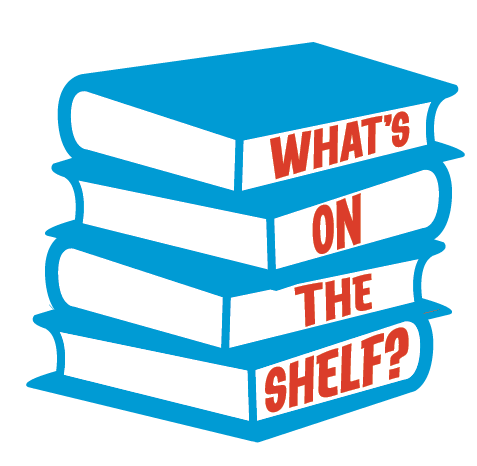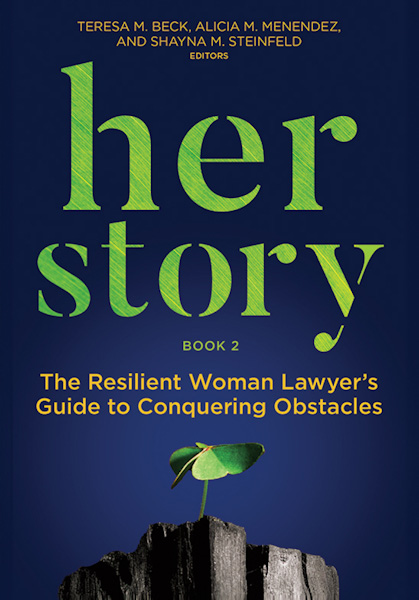'There are obstacles, and it's not you,' says co-editor of collection of essays focused on female lawyers

Women enter law at comparable rates to men. Yet they occupy only a small portion of leadership roles at law firms and exit the profession at higher rates than men.
In Her Story: The Resilient Woman Lawyer’s Guide to Conquering Obstacles, Teresa M. Beck, managing shareholder of Klinedinst’s work in Arizona and Nevada, co-edits a compilation of first-person essays written by women sharing their thoughts, challenges and experiences in the legal field.
It was released by ABA Book Publishing in January. The other co-editors are Alicia M. Menendez, a senior counsel with Shook, Hardy & Bacon, and Shayna Steinfeld, a partner with Steinfeld & Steinfeld. Beck, a former president of the National Conference of Women’s Bar Associations, spoke with the ABA Journal.
The book’s foreword from Anne Marie Seibel, chair of the ABA’s Litigation Section, mentions that there are now many women law students and lawyers, but when women get into the practice, it becomes apparent there’s still a lot of work to be done. Did you have an “aha” moment like that?
I think I’ve had a lot of “aha” moments. My mom was a teacher, and my dad was a chaplain in the Navy. They raised me to think I could do whatever I wanted, so I entered the profession thinking I would not be impacted by any kind of obstacle related to gender. It really does take a while before you realize that you’re wrong about that, and gender does have an impact. Many of us think there’s something inadequate about ourselves, and we keep working on our perceived inadequacies. That’s kind of what I did for a long time, thinking that if I just get one more client or win this award or get appointed to that committee, finally, the people that I’m working with will see my value. But that never happened. I think it takes a while before you have that aha moment, which is one of the reasons why I think books like this are so important, so that we share the information about the struggles that women have in the profession, and hopefully, younger women don’t have to go through a decade or more in a career thinking that they’re falling short.

You were also involved in the first book, Her Story: Lessons in Success From Lawyers Who Live It. What was the idea behind doing a second book?
The first book dealt with what we call work-life management issues, and we felt that was important at the time. We had younger women say: “How am I going to do it? Am I going to be able to have a family or have other outside interests and work too?” By the time the second book rolled around, we’ve all kind of grown in our careers and realized we were facing obstacles. We wanted to let younger women know there are obstacles, and it’s not you. And then, what can you do about these different obstacles in order to overcome them?
Do you have a favorite chapter or favorite essay in the book?
That is hard because each of these stories is a gem with an important message. I wouldn’t necessarily say that I have a favorite, but I would say there was one that I felt kind of shook me and made me realize how different the profession can be for women of color. It’s Yendelela Neely Holston, her essay, “Mandatory Magic: Being Black and a Woman in BigLaw.” I have a lot of Black women friends, and I thought I was pretty aware, but her essay was really eye-opening for me. There is some different kind of magic in there; she’s sharing an amazing story about her experience that I think a lot of us could learn from.
The book contains essays from women lawyers from various backgrounds but also includes a few essays from male lawyers. What was the thinking behind that?
In some cases, it was because we had a lack of authors on the subject. We tried to get women, for example, on the subject of suicide. It turns out the person who could write the essay for us was a guy, and we thought that was fine. We recognize men in power have a lot of power to change things, and we want to tap into that power to get the male leaders who have awareness of these issues to bring on their friends and their colleagues to try and tackle these issues.
What’s a piece of advice you would give women law students or lawyers working their way through the industry?
I think getting involved with women’s bar associations was one of the best things I ever did. I met women who became friends. And I realized the leadership roles I could have in those groups translated into leadership roles you can have at a law firm. So that’s one thing I would highly recommend. With the American Bar Association, there are various women’s groups. And, of course, in the Litigation Section, we have the Woman Advocate Committee. I think there are amazing groups that are doing great work helping to advance women. It provides kind of a big family to help women as they pursue their careers.


